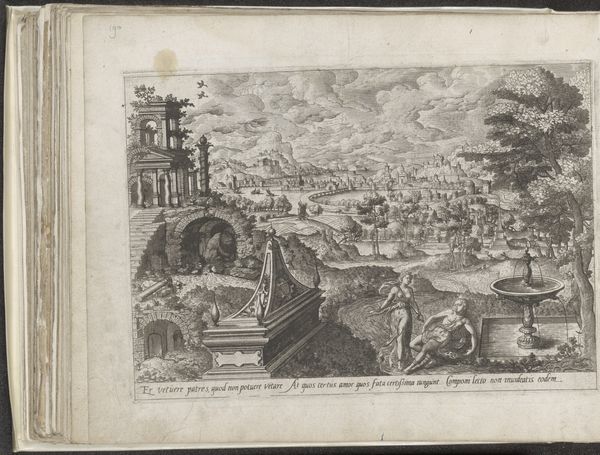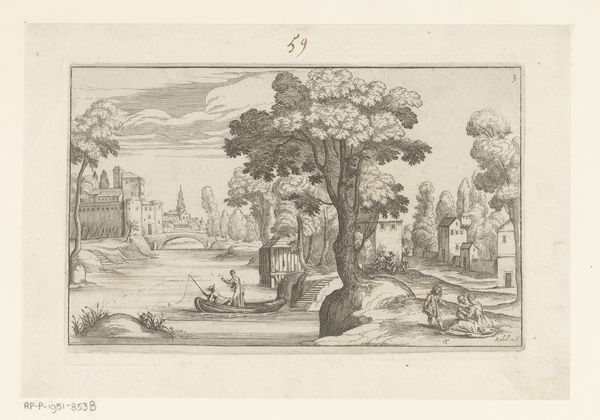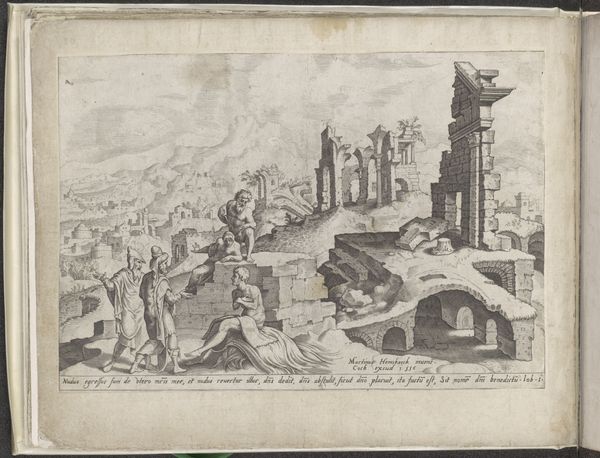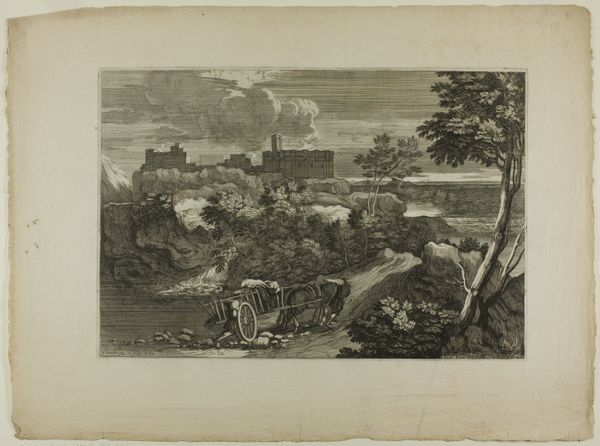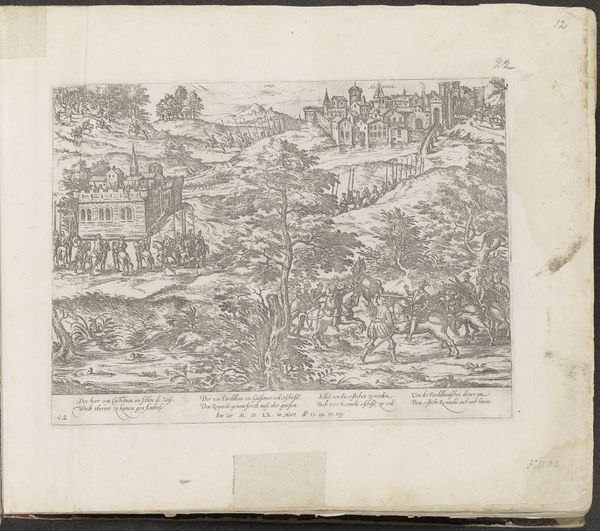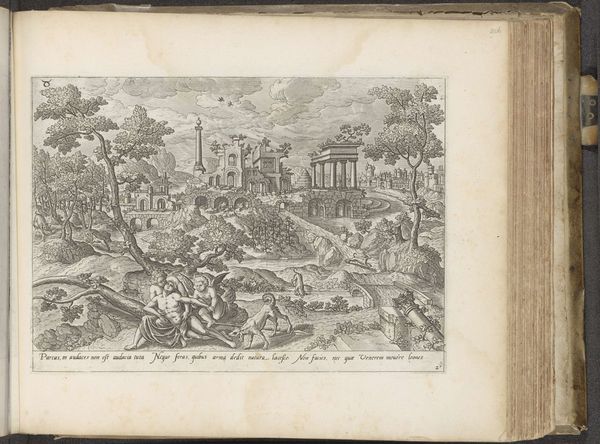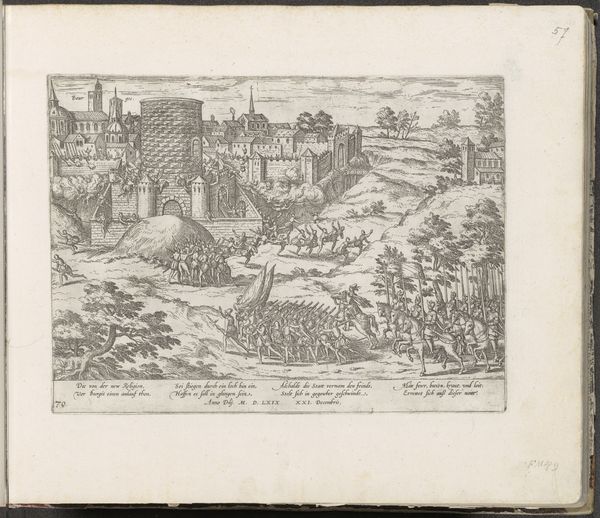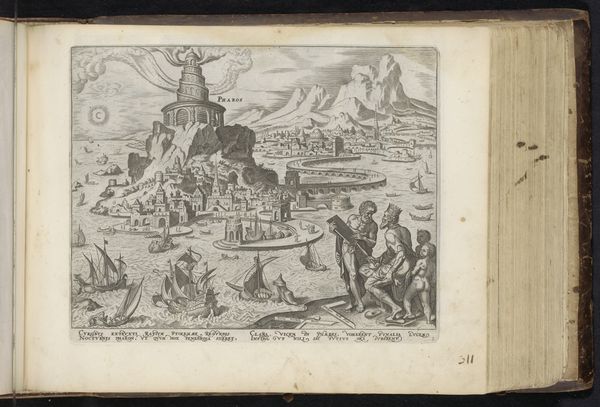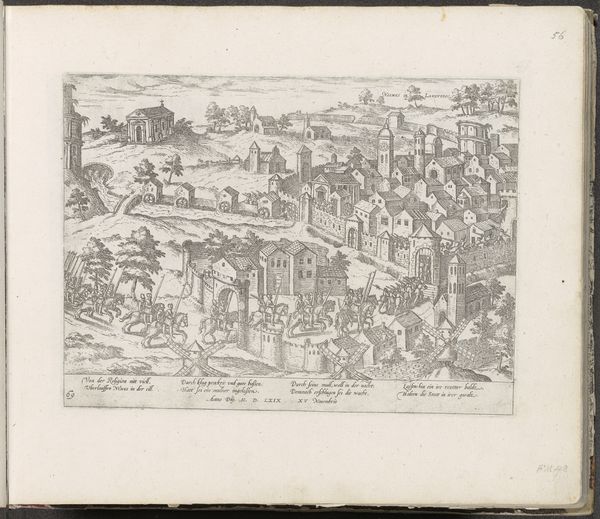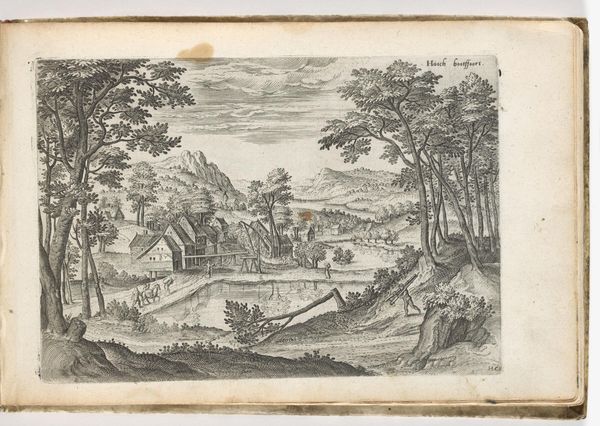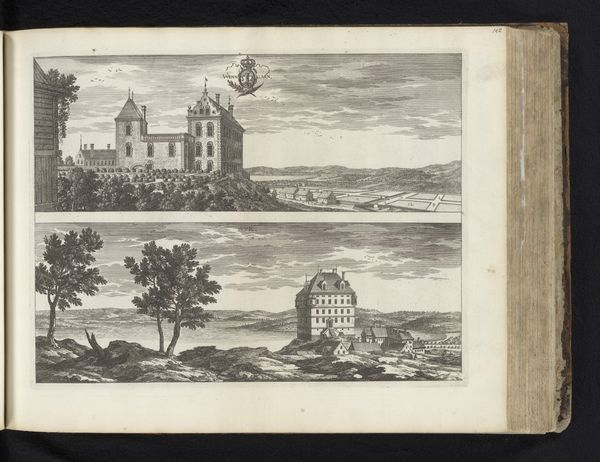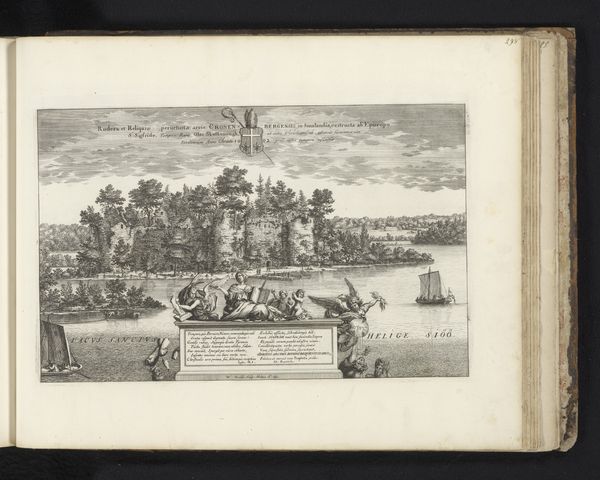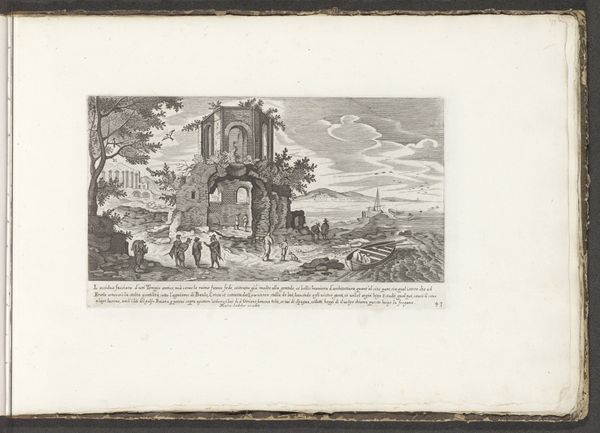
print, etching, engraving
#
narrative-art
# print
#
etching
#
landscape
#
river
#
mannerism
#
figuration
#
form
#
geometric
#
line
#
history-painting
#
italian-renaissance
#
engraving
Dimensions: height 170 mm, width 322 mm
Copyright: Rijks Museum: Open Domain
Curator: We’re looking at Philips Galle's etching and engraving, "Landscape with Pyramus and Thisbe," created sometime between 1567 and 1571. It’s currently held at the Rijksmuseum. What strikes you first? Editor: The contrast! Look at how finely detailed the city and surrounding landscape are in the background. It feels almost dreamlike against the violent scene taking place in the foreground. The tonal range of the print is superb, as well. Curator: It’s a fascinating confluence of styles. On the one hand, the Mannerist influence is undeniable—the contorted poses of the figures and the highly stylized landscape are typical of the period. But consider the means of production. This printmaking would have required considerable labor and skill. Editor: Precisely! The sharp lines, created through etching and engraving, define the scene. The composition guides our eye through the tragedy, almost like a stage play, but those crisp lines denote a tragic scene, indeed! Curator: Absolutely. Galle, along with others like Hieronymus Cock, ran prolific printmaking workshops. They weren't just artists; they were entrepreneurs responding to a growing market for accessible art. These prints allowed for the dissemination of classical stories and visual ideas. Editor: Do you think this piece adheres too strictly to its Renaissance predecessors or do the architectural components lend some new ideas? I mean, it all blends perfectly well and feels so balanced... Curator: Renaissance art sought to emulate classical ideals, with Galle’s prints functioning as a vital link between ancient narratives and early modern audiences. But beyond that, there's value in acknowledging the sheer industry involved in producing and distributing prints like these. Think about the access and audience created in that exchange of value and object... Editor: Well said, viewing it this way, through the perspective of materiality, illuminates its own significance beyond simply an illustrative medium for familiar subjects. I am even more pleased to appreciate it even after our brief study. Curator: Yes, and with a focus on that process and production, it reveals much about the economic and cultural landscape of the time. Thank you.
Comments
No comments
Be the first to comment and join the conversation on the ultimate creative platform.
